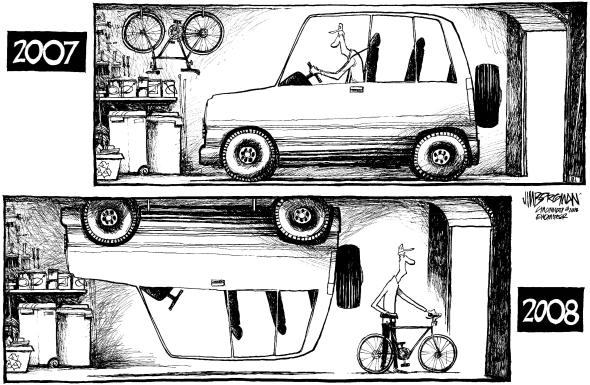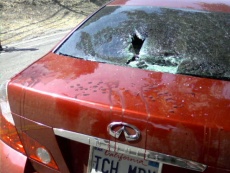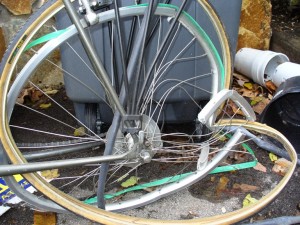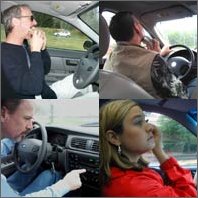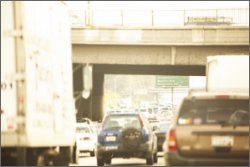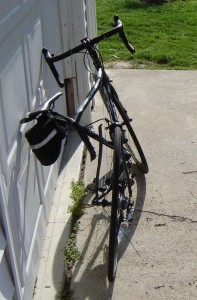Velo News has been publishing regular updates of the Road Rage trial going on right now in California. An Emergency Room doctor is accused of committing a road rage incident in which two cyclists were injured.
You can read the latest here…
Patrick Brady’s story of 10/22/09 is particularly compelling and reprinted below. You can read the story on Velo News here or simply follow along below —
Steve Magas
The Bike Lawyer
================================
Road Rage – E/R Doc on Trial in CA
Velo news –
LAPD investigator tells jury in road rage trial he was shocked at a driver’s comments.
By Patrick Brady
Published: Oct. 22, 2009
“I WANTED TO TEACH THEM A LESSON” – Trial Continues
A traffic investigator told jurors in the Los Angeles road rage trial this week that a driver’s comment at the scene of the incident “was so shocking his words burned into my brain.”
Dr. Christopher Thomas Thompson is on trial in Los Angeles Superior Court for assault and other charges related to an incident on a narrow canyon road involving two cyclists on the Fourth of July, 2008. Thompson also faces charges related to a similar, earlier, incident on the same road, involving a different cyclist. If convicted of all charges, Thompson could spend up to five years in prison.
Prosecutors say that after a brief exchange of words on the Fourth, Thompson passed the two cyclists then slammed on his brakes, causing the riders to crash into the rear his car.
On Tuesday, the jury heard testimony from a Los Angeles police traffic investigator, a doctor who treated the cyclists at the scene and a plastic surgeon who operated on one of the cyclists’ broken nose. The testimony was graphic enough that one juror had to leave the court room for a few minutes after feeling faint. Jurors also heard from the cyclist who says he had the earlier encounter with Thompson.
After a break Wednesday, testimony resumes Thursday.
’Burned into my brain’
LAPD traffic investigator Robert Rodriguez said he arrived at the scene on Mandeville Canyon Road with the fire department and asked Thompson what happened.
According to Rodriguez, Thompson said, “I just live up the road. I was driving to go to work. The bikers were in front of me, three across. I honked my horn and yelled ‘ride single file.’ The bicyclists flipped me off and yelled back. I passed them up and stopped in front to teach them a lesson. I’m tired of them. I’ve lived here for years and they always ride like this.”
Thompson’s attorney, Peter Swarth, questioned Rodriguez extensively about how he could recall the exact words, since Rodriguez did not write them down for more than 90 minutes.
Later, Deputy District Attorney Mary Stone asked Rodriguez in re-direct examination how he was able to remember.
Rodriguez replied, “That statement was so shocking his words burned into my brain.”
Stone asked, “Have you ever been to a collision where someone said they wanted to teach that person a lesson?”
“Never,” said Rodriguez.
Rodriguez said that after Thompson’s comments, he decided the incident was assault with a deadly weapon and called the department’s patrol division to take over the investigation.
Samaritan neighbor
Physician Bruce Rogen later testified that he came upon the scene while driving up the canyon to his home that morning.
Rogen said he approached Peterson, who was “sitting cross-legged leaning forward dripping blood. The piece of cloth to his face was sodden with blood. There was a fair amount of trauma. I identified myself as a doctor and asked a few questions. I was concerned there could be more damage.”
Rogen checked Peterson for a head injury. He checked the injury to Peterson’s nose and removed his own shirt and used it to apply pressure to the wound.
In listening to the description of Peterson’s blood loss, one juror began feeling faint and court was recessed for five minutes.
On cross-examination, Swarth asked Rogen about any exchange he had with Thompson and with the cyclists regarding Thompson — a former emergency room physician.
“(The cyclists) didn’t want him to treat them,” he said. “They didn’t want him nearby.” Asked to describe Thompson, he said, “He seemed agitated, anxious.”
Surgeon testifies
Geoffrey Keyes is the plastic surgeon who operated on Peterson. In his testimony he said Peterson’s injuries included a broken nose and broken internal structures as well as scars on his lip, chin and nose. He needed nasal septul reconstruction.
The surgery was performed under general anesthesia, required re-breaking the nose and using chisels to shape the bone and took an hour and half to complete. Displays included photographs taken before and after the surgery.
The earlier incident
Previous articles:
Oct. 20, 2009: Defense suggests cyclists were looking for a fight
Oct. 19, 2009: Road-rage trial begins
Oct. 12, 2009: California road-rage case heads for court
Dec. 24, 2008: Mionske: Mandeville incident inspires Cyclists Bill of Rights
Aug. 15, 2008: Mionske: Bikes v. cars
Aug. 8, 2008: Mionske: Where’s the justice?
July 14, 2008: Mailbag: Readers sound off
July 13, 2008: Doctor charged
July 10, 2008: LA incident rallies cyclists
Final testimony on the day came from Patrick Watson, a former professional adventure racer who filed charges against Thompson for an alleged incident that occurred in March, 2008.
Watson said he and training partner Josh Crosby were descending at roughly 30 mph —the speed limit for the road — when Thompson approached from behind. Crosby and Watson moved to ride single file, he said.
Watson said, “The car came so fast and so close I had to jump off the road. I did a bunny hop up the curb into the grass. When I jumped back on the road Thompson slammed on his brakes.”
Watson said he bunny hopped back onto the curb and stopped. He got off his bike and leaned it against a fence.
“(Thompson) drove straight at me and then he drove off,” he said.
Watson contacted the police and attempted to press charges, but ultimately, no charges were filed.
Asked by Stone why he contacted the district attorney, Watson said, “I wanted to make sure they did something this time.”
Los Angeles Deputy District Attorney Mary Stone rested the prosecution’s case against Dr. Christopher Thomas Thompson on Friday afternoon, following five and a half days of testimony in Thompson’s trial on assault charges.
The charges stem from an altercation with two cyclists on a Los Angeles County canyon road on July 4, 2008, and another incident involving two different cyclists in March that year, on the same road.
In the final two days of the prosecution’s case, jurors heard testimony from two cyclists involved in the March episode, which did not result in any injuries.
Jurors also heard testimony from doctors who treated the cyclists in the July 4 incident; an accident reconstruction expert who analyzed GPS files from cyclists in both incidents; another cyclist who said he had an altercation with Thompson earlier, and finally an LAPD detective who investigated the case.
The March incident
Thursday began with defense attorney Peter Swarth finishing up the cross-examination of Patrick Watson, one of the riders involved in the March incident. Swarth spent a great deal of time going over Watson’s two bunny hops onto the grass next to the road as well as the distances between Dr. Thompson and Watson at various stages of the incident.
Watson had difficulty relating specific distances at specific points. Eventually, in referring to the point at which Watson got off his bike, Swarth said, “You wanted to kill (Dr. Thompson)!”
“I was pissed,” Watson said.
Testimony then moved to the inability of a motorist to identify a cyclist by anything such as a license or other identifying mark.
Swarth charged, “You remain anonymous!” to which the prosecution objected as argumentative, which the judge sustained.
Next to testify was Patrick Watson’s training partner, Josh Crosby. Crosby had an easier time describing the events of the day to the jury. He said Thompson passed them, words were exchanged, then Thompson pulled ahead, forcing Watson onto the grass and Crosby into oncoming traffic. He said after Watson returned to the road Thompson stopped suddenly, forcing Watson back onto the grass and Crosby into the oncoming traffic lane yet again. Crosby said when he told Thompson to get out of the car, Thompson accelerated toward each rider.
Later, under cross-examination, Swarth asked Crosby why he wanted Thompson to get out of the car. Swarth asked, “Did you want to educate him?”
“I don’t think there was any need for education,” Crosby said. “I think he knew what he was doing.”
Swarth asked what his plan was.
“The plan,” Crosby said, “was to see if my teammate was okay, get (Thompson’s) info and wait for the cops.”
GPS data
Watson, in the March incident, and Stoehr, in the July 4 incident, each used GPS devices on their bikes. Accident reconstruction specialist Gerald Bretting said the devices showed Stoehr was going 28.1 mph and Watson was going 29.2 mph just prior to Thompson passing them in their respective incidents.
A third incident raised
Patrick Early told jurors that he had an incident with a driver he believes was Thompson, sometime in the winter of 2008. Early, who said he is a casual cyclist, said he could hear a car approach at a high rate of speed, which he estimated to be 40 to 50 mph. He said he could judge the speed by the engine’s high rpms, the tire sound on the road and the sound of air moving over the body of the car.
Following a loud, long honk of the horn, Stone asked Early what he did next.
“I braced for impact,” he said. “I thought I was going to be hit.”
Early works in the automotive industry and described in great detail how he identified the vehicle that passed him. He even drew a sketch of the differences in body styles of various Infiniti models.
According to Early, as the car passed, the driver turned and said either, “Get the fuck out of the road,” or “Get the fuck off the road.” Early said he couldn’t be certain which of the two it was due to wind noise.
Early said he yelled back after the car was past, “I think, asshole.”
Early said the driver stopped approximately 25 feet ahead of him. Because Early was riding uphill at only about 10 mph, he was able to stop without running into Thompson’s vehicle.
Early testified the driver was “angry, extremely angry. He was in a rage; he was someone out of control.”
The defense begins its case at 11 a.m. Monday.

